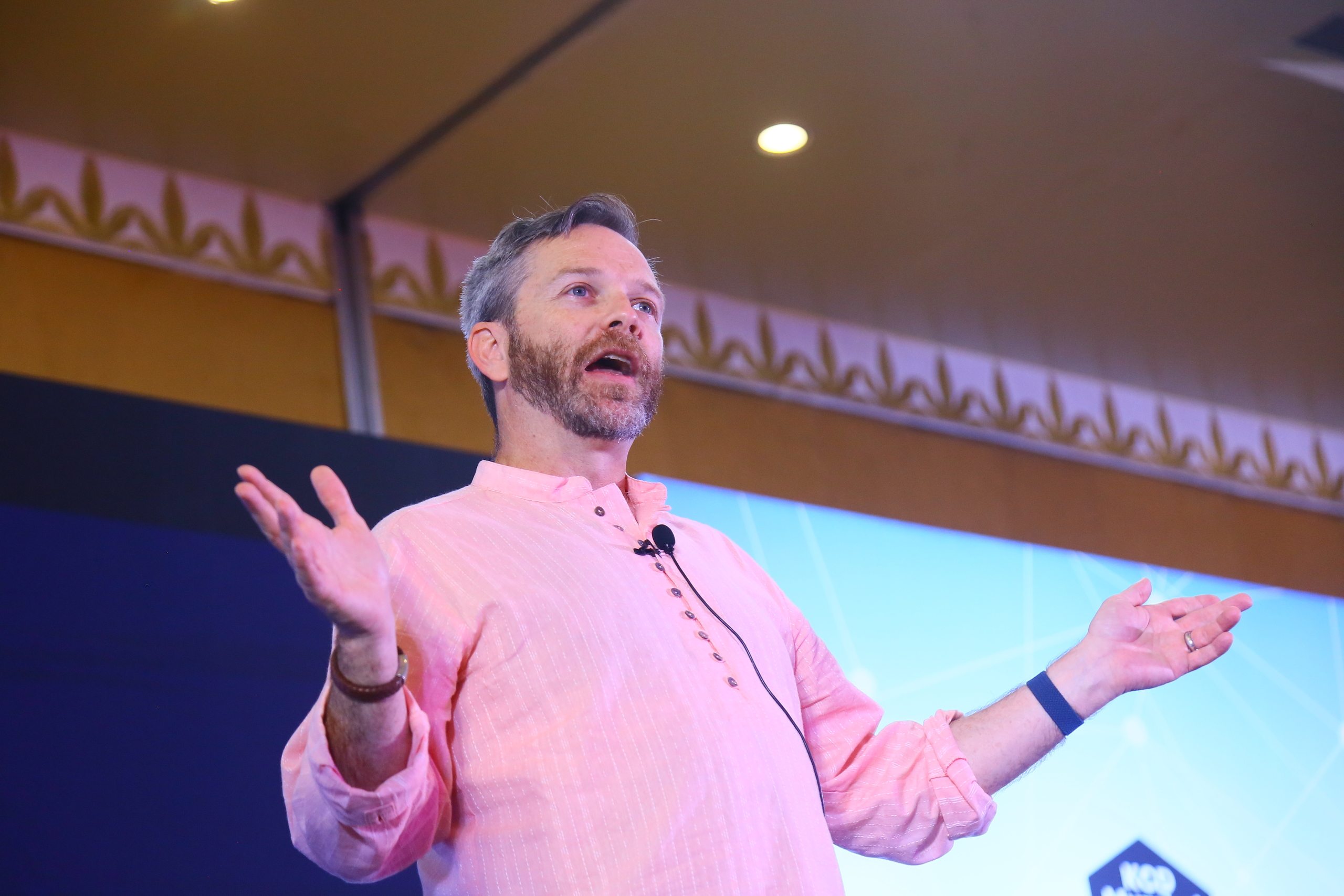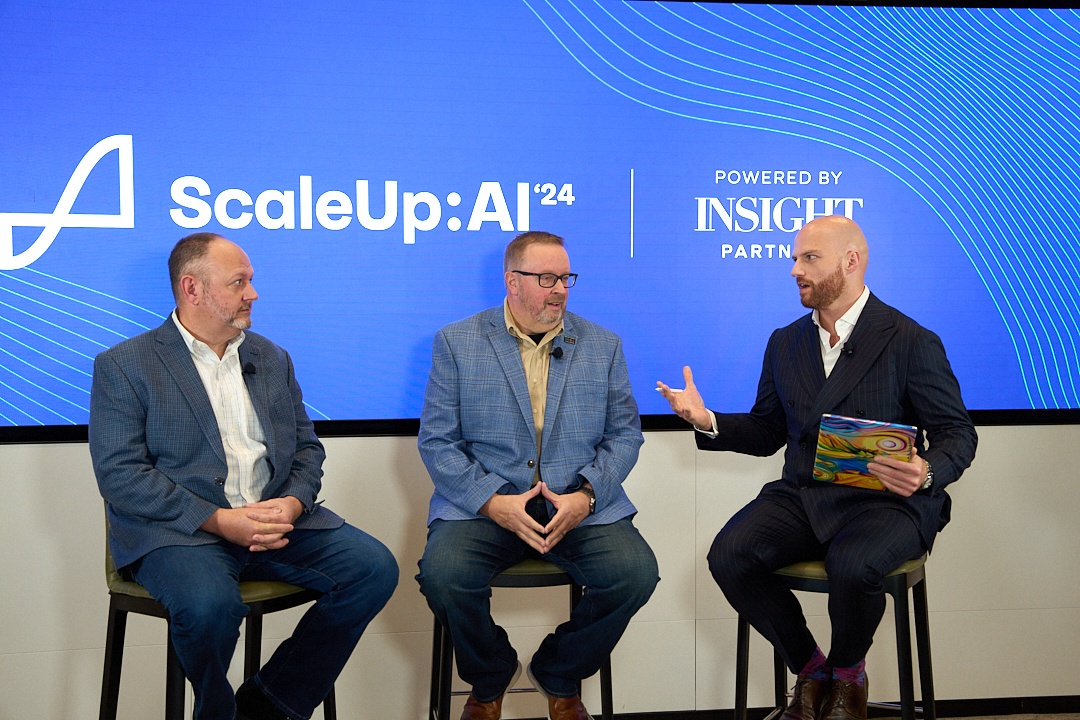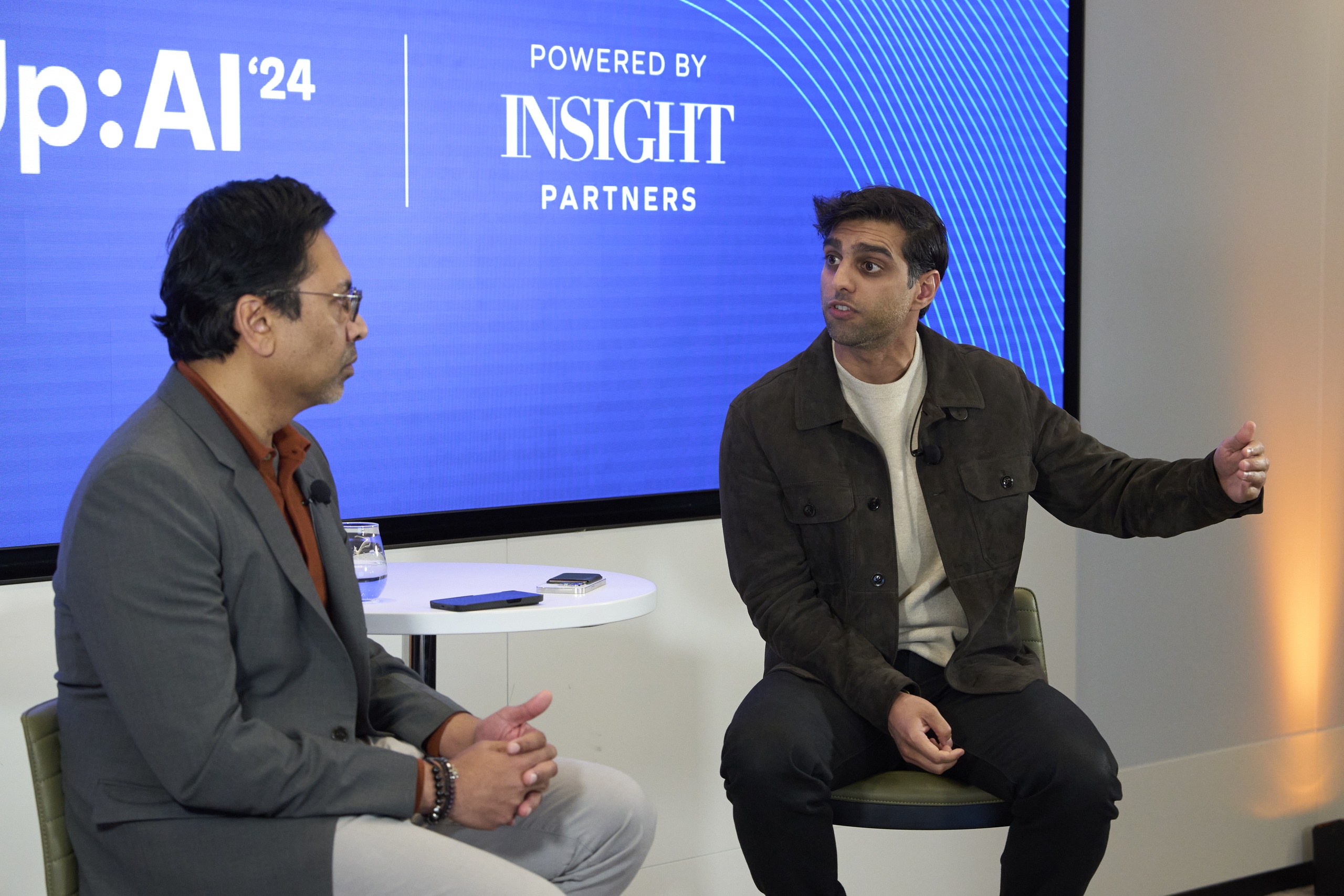How a casual conversation over whisky became Fermyon, a business that’s revolutionizing cloud computing

The idea for Fermyon, a startup that is defining the next wave of cloud computing, was born during a Microsoft offsite in British Columbia, after-hours and over maple-infused whisky.
It was 2018 and Matt Butcher and his team found themselves chatting over drinks about the challenges of cloud computing.
“We were sitting there, on this not very good whisky, and just got into this creative zone,” says Butcher.
He and several colleagues joined Microsoft in 2017 when it acquired their company, Deis, which created popular tools for building Kubernetes apps. Butcher had become a principal software development engineer on a de facto open-source R&D team inside Microsoft Azure.
“We had two jobs when we were there,” he recalls. “The first was to help Microsoft repair its reputation in the open-source ecosystem. And the other was to go out there, talk to customers, and find out what was hindering them as they tried to adopt cloud technologies. And then build the right tools to solve these problems for people.”
The team discovered a long list of problems but a short list of solutions.
That was because the current systems and how they worked in the cloud weren’t suited to the needs of the present day. Broadly, there were two kinds of cloud computing in use – virtual machines and containers – and neither solved the interaction problems raised by customers.
Dreaming up a new kind of cloud computing
So over the too-sweet whisky, Butcher and his colleagues began sketching out a third cloud computing model. They came up with a set of characteristics they felt it needed to have — instant startup speed was near the top of the list, as was an ability to span architecture across time.
Because Fridays on the team were devoted to researching new areas, the group dedicated time each week to figuring out this new model of cloud computing.
Butcher had recognized, from years of meeting Microsoft’s cloud computing users, that the biggest hardship wasn’t grid management or power consumption but capacity. Users can rack servers as fast as possible and fill them quickly – but most of those servers aren’t actively running workloads.
They’re being “used,” technically, but aren’t doing anything. “What we discovered was the way we have been using computing is fairly inefficient,” says Butcher. “Most of our systems sit around idle.”
What would become Fermyon solved that inefficiency. A serverless and faster cloud, it is architected from the ground up to compile and ship code in WebAssembly binaries. WebAssembly can execute code at near-native speed in the browser or on servers, making it faster, with higher performance, than JavaScript for building web applications.
Rather than relying on servers that sit idle and need time to spin up, Fermyon can instead execute code extremely fast. This then frees up resources for another application to use servers to run at a much higher efficiency instead of sitting idle for long periods of time.
Microsoft’s reaction to the idea planted the startup seed
Around 10 out of Butcher’s 14-strong team were working on the idea at its peak, eventually reaching a point in early 2021 that they felt ready to pitch it to Microsoft higher-ups. Butcher’s audacious plan was to overhaul his team to break out of their current mandate and focus on this new paradigm.
But the reaction within Microsoft was lukewarm at best.
Azure was scaling enormously and providing great results for the business. And this serverless option would not only compete with it but potentially nullify the need for it. “The meeting ended with them going, ‘You know, the current technology is rocketing upward. It’s our fastest-growing service. And you’re suggesting you want to go off and build a competitor to this? I think it’s premature to do that.’”
However, Butcher was taken aside by his boss – Brendan Burns, the creator of Kubernetes – after the meeting, who asked whether he had ever considered starting a company. “I have no idea to this day if he was ribbing me,” admits Butcher. “He has a very droll sense of humor.”
As part of his role at Microsoft, he consulted with venture capital firms. So he tapped that network for advice on launching a company.
“I thought it was going to take years to do this,” says Butcher. “It always seemed like a big, insurmountable hill to build a company.” Instead, Butcher talked to three VCs and rapidly received two term sheets.
He and his co-founder, Radu Matei, decided to approach their Microsoft team.
They did so on a Friday evening around 7 pm. “We laid out the vision for the company and all that,” says Butcher. “And we all agreed we were going to shop it out to VCs.”
“I thought it was going to take years to do this. It always seemed like a big, insurmountable hill to build a company.”
Matei and Butcher asked their team members at Microsoft to take the weekend to decide on whether they’d join Fermyon or stick with the tech giant.
“The last thing I said was, if you’ve got any questions, reach out to Radu, reach out to me. Otherwise we’ll reconvene at 7 pm Monday night and see how things are going,” recalls Butcher.
His announcement was met with silence. The two co-founders began texting each other, wondering if they had made a massive mistake.
But then, by Monday at 7 pm, almost everybody said yes. “We had ten people who left Microsoft all on the same day, which I think caused my boss near cardiac arrest,” says Butcher. Fermyon was born on October 21, 2021.
Things moved quickly from there. The company closed its $6 million seed round by the end of that year.
Winning over the Hacker News crowd
Assembling and trusting a team allowed Butcher to focus on the important elements of building the business. On March 31, 2022, the company released its first open-source product, Spin, a developer tool for building WebAssembly microservices and web applications.
Spin was designed with a specific audience in mind: developers who wanted to build serverless applications but were thwarted by the complexity of doing so on AWS, GCP, or Azure. The Fermyon team found many of these folks were quite active on Hacker News.
“They’re obnoxiously happy about something when they like it and obnoxiously antagonistic when they don’t,” says Butcher. “But they’re always trying cutting-edge stuff. So we knew if we could find a foothold in that crowd and win them over, we’d have a nice path forward.”
“If we could find a foothold in the Hacker News crowd and win them over, we’d have a nice path forward”
Fermyon launched its blog about Spin in February 2022, and hype ensued. It gained traction and peaked at number three on the most-read list.
“Our core user story for 2022 was that, as a developer, you could go from a blinking cursor to a deployed application in two minutes or less,” says Butcher. By December 2022, he and the team had managed to get that down to 66 seconds and launched a cloud platform.
Scale up your career: See all open roles at Fermyon on the Insight Partners job board.
The investor POV

“There was a really strong connection and common bond over how WebAssembly could be the next wave of cloud computing”
Fermyon also attracted the attention of Insight Partners.
Michael Yamnitsky, managing director at Insight Partners, was tracking WebAssembly since his time at Datadog, a company that ran one of the largest Kubernetes clusters in the world.
“I was blown away by WebAssembly’s potential to simplify serverless application development and allow developers to build polyglot applications,” says Yamnitsky.
Fermyon and Insight Partners first met in March of 2022. Fermyon had a bare-bones skeleton of its Spin framework to show.
“We have a shared vision for where serverless development could go with WebAssembly. We also both really like a good loaf of rye!” says Yamnitsky. Knowing Butcher was a fan, Yamnitsky brought him a loaf from Tartine bakery in San Francisco, carrying it with him on the plane to Boulder, Colorado.
“There was a really strong connection and common bond”
By May 2022, the pair met up in Valencia, Spain, at KubeCon. They went out for dinner in the Spanish city, sketching out plans for the future of the business on napkins. “It made it clear that there was a good fit here to work together on this business,” says Yamnitsky. “A couple of weeks later, we proposed a Series A investment, and the rest is history.”
Insight Partners team led a $20 million funding round in October 2022.
Gambles, roadmaps, and the future of Fermyon
Since its investment, Insight Partners has helped Fermyon find a lucrative new target audience by introducing them to developer teams at companies of all shapes and sizes.
Fermyon wooed the Hacker News crowd, but it needed to zero in the broader cloud computing market. So, the company began building out a paid tier that offered a full platform and support for teams in all sorts of industries to harness the power of serverless computing — with the ease of going from blinking cursor to fully deployed application in under 60 seconds.
“We wanted to make it possible that the day people started using these kinds of features, they would have the option to upgrade to a paid tier,” says Butcher. The upgraded, serverless cloud option was designed to coax people who were testing WebAssembly to put their applications into production.
But the company is confident, as is Yamnitsky. “This was a team that has real expertise in WebAssembly and in cloud computing,” he says.
“This team has real expertise in WebAssembly and in cloud computing”
Throughout its development, Fermyon has drawn a hopeful roadmap for growth and has met or exceeded every milestone.
That team of ten ex-Microsoft engineers who left on the same day now nears 30. The plan is to grow to a team of 32 to 34 by the end of 2023. “And we’ll probably have to hire engineering managers next year, which is a big thing,” says Butcher.
The aim is to hit a significant revenue milestone by Q4 2023 and to start seeing the fruits of that labor – exponential growth – by early next year.
“The team’s pace of development is extremely fast,” says Yamnitsky. “They have managed to assemble a very strong team and have outpaced our own internal expectations for how quickly they could bring it on.”
Interviewed by Chris Stokel-Walker for Insight Partners.










